Electricity was in the air at the RE+ conference in Anaheim, California, as more than 27,000 people were estimated to have attended the show. The nation’s largest energy conference was even more exciting than usual, since this was the first *large* U.S.-based solar show since 2019.
As always, solar modules from the world’s largest manufacturers were near the doors as pv magazine USA first walked in. But all around the floor (and outside) were other products of great interest.
Toledo Solar’s residential and commercial thin film solar panel was on display. The company’s product, the TS2-WS 115 Watt unit, is sized, constructed, and modeled after the FirstSolar Series 4 product. This makes a lot of sense, since the two companies are neighbors in Ohio.
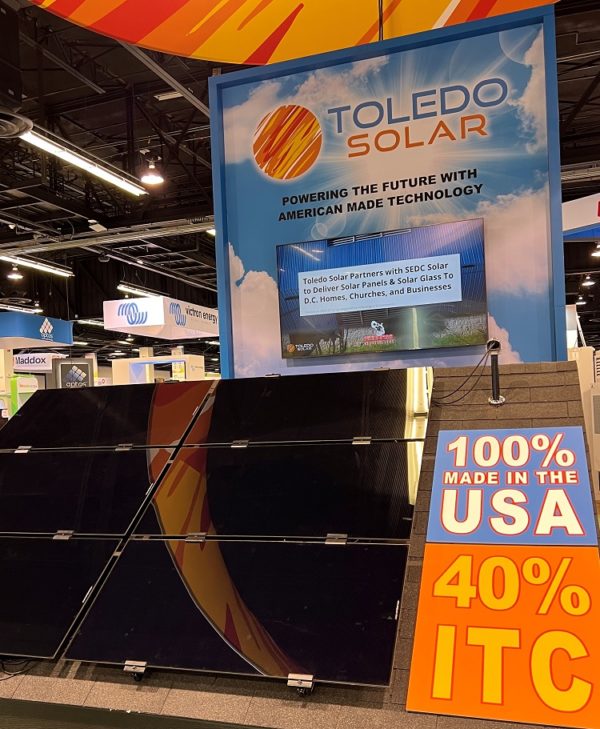
The salesperson lauded the panel’s strong low light performance and low degradation values. And since they are manufactured in Ohio, the panels are seemingly eligible for the additional domestic content 10% tax credit due to the recently signed Inflation Reduction Act.
Philadelphia Solar is a new solar panel manufacturer from Jordan. The company had a sweet solar ping pong table that seemingly produced electricity as the company’s Chief Commercial Officer Mohammad Shehadeh announced via LinkedIn that they closed 330 MW worth of contracts at the show and are expanding to 1.5 GW/year of manufacturing capacity.
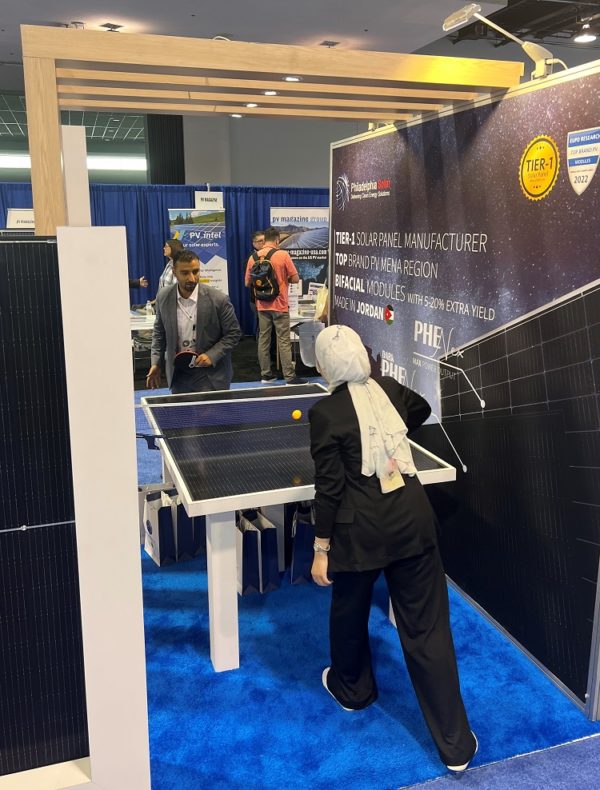
The company’s name comes from it being the name of Jordan’s ancient capital city (Amman). For a period of 1,000 years, from ~300 BC to 700 AD, the city was known as Philadelphia, named after Ptolemy II Philadelphus, who rebuilt the city and named it after himself.
It’s not a solar module, but a device that helps installers get modules up on the roof. The G2 Unit, from TransVolt, lifts 5 solar modules (up to 250 pounds) onto a typical roof in 30 seconds. This clever device reduces physical labor, speeds up installation, and looks considerably safer than carrying modules up a ladder!
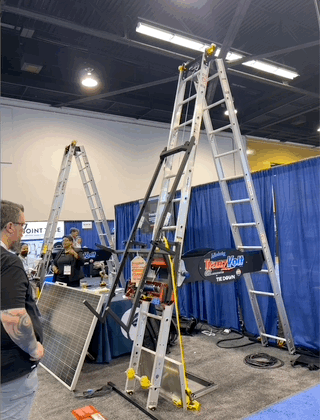
Canadian manufacturer Mitrex recently launched their building integrated solar module series that looks a lot like…a roof! The company set up four unique modules outside of RE+ to give viewers a greater chance to see the module under natural sunlight.

The company’s standard solar module product comes in four designs. From left to right: Black Asphalt, Green Slate, Wood – Brown, and Black Shingles – all are designed to look like roofing materials. From a distance, one might not even notice that they are solar panels!
The Ningbo OSDA Solar booth attracted attention from displaying the many sizes of solar panels that the company manufactures. The group has been assembling modules in China since 2005.
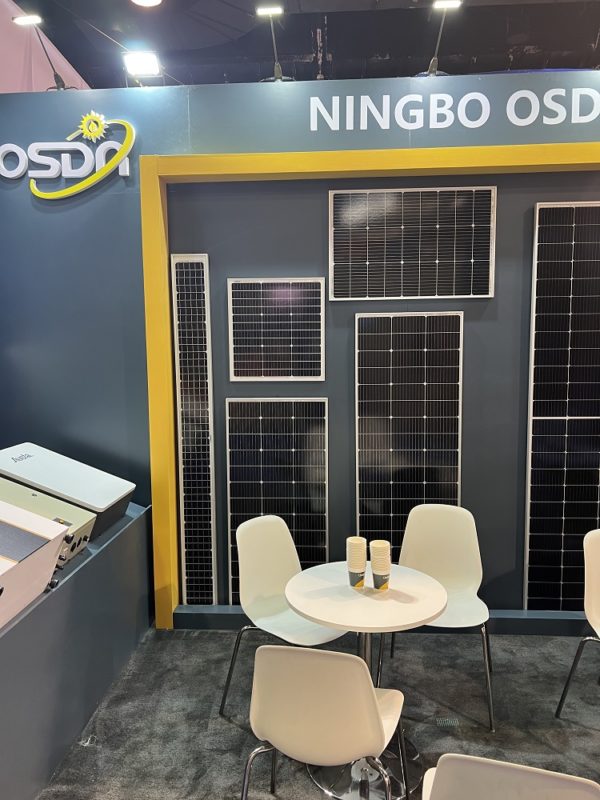
Some of the modules’ uses include trackers, lighting, security, data, and off grid housing. The big one on the right, partially cropped out, is a grid connected residential panel.
Though many of the international manufacturers’ brand names are less recognizable, most have been around for many years – manufacturing solar panels, batteries, inverters, racking, and more.
Some of the alternative uses for solar panels were pretty novel:

While the Dust IQ does have a solar panel, its purpose is not to support the power grid, but instead to give data on the amount of dust that is on its custom solar panel, and give insight as to how much revenue is being lost to that dust on a solar farm.
pv magazine USA learned that VSUNSolar, a Japanese owned company, is considering an expansion into the USA via a new facility, and is expected to split their volume between an unnamed U.S. investor and the general market. Below is the company’s flagship 670 watt module, which stands at seven feet, nine inches tall, and weighs in at 84.8 pounds.
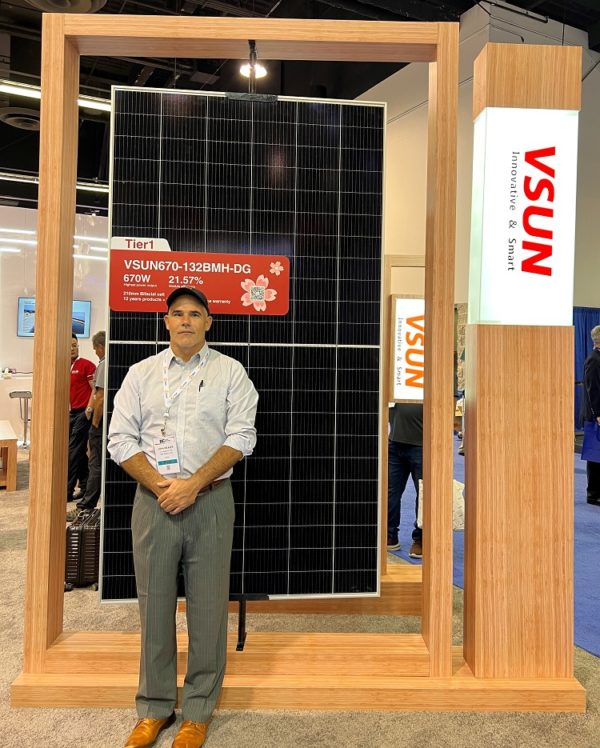
VSUN plans to increase their overall manufacturing volume to approximately 3.8 GW/year of module assembly capacity by the end of year. They also have plans to move up the supply chain, adding cell and wafer manufacturing to their portfolio. We should expect an updated polysilicon agreement soon.
This content is protected by copyright and may not be reused. If you want to cooperate with us and would like to reuse some of our content, please contact: editors@pv-magazine.com.

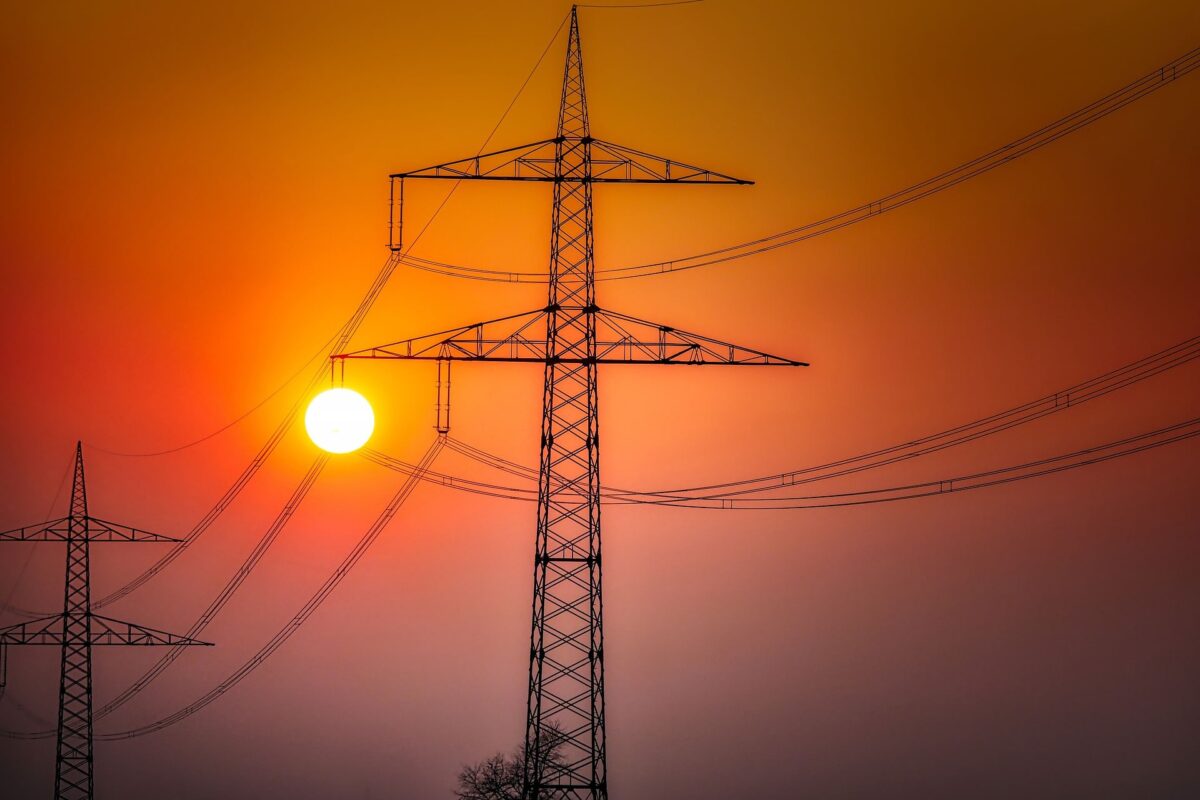






By submitting this form you agree to pv magazine using your data for the purposes of publishing your comment.
Your personal data will only be disclosed or otherwise transmitted to third parties for the purposes of spam filtering or if this is necessary for technical maintenance of the website. Any other transfer to third parties will not take place unless this is justified on the basis of applicable data protection regulations or if pv magazine is legally obliged to do so.
You may revoke this consent at any time with effect for the future, in which case your personal data will be deleted immediately. Otherwise, your data will be deleted if pv magazine has processed your request or the purpose of data storage is fulfilled.
Further information on data privacy can be found in our Data Protection Policy.